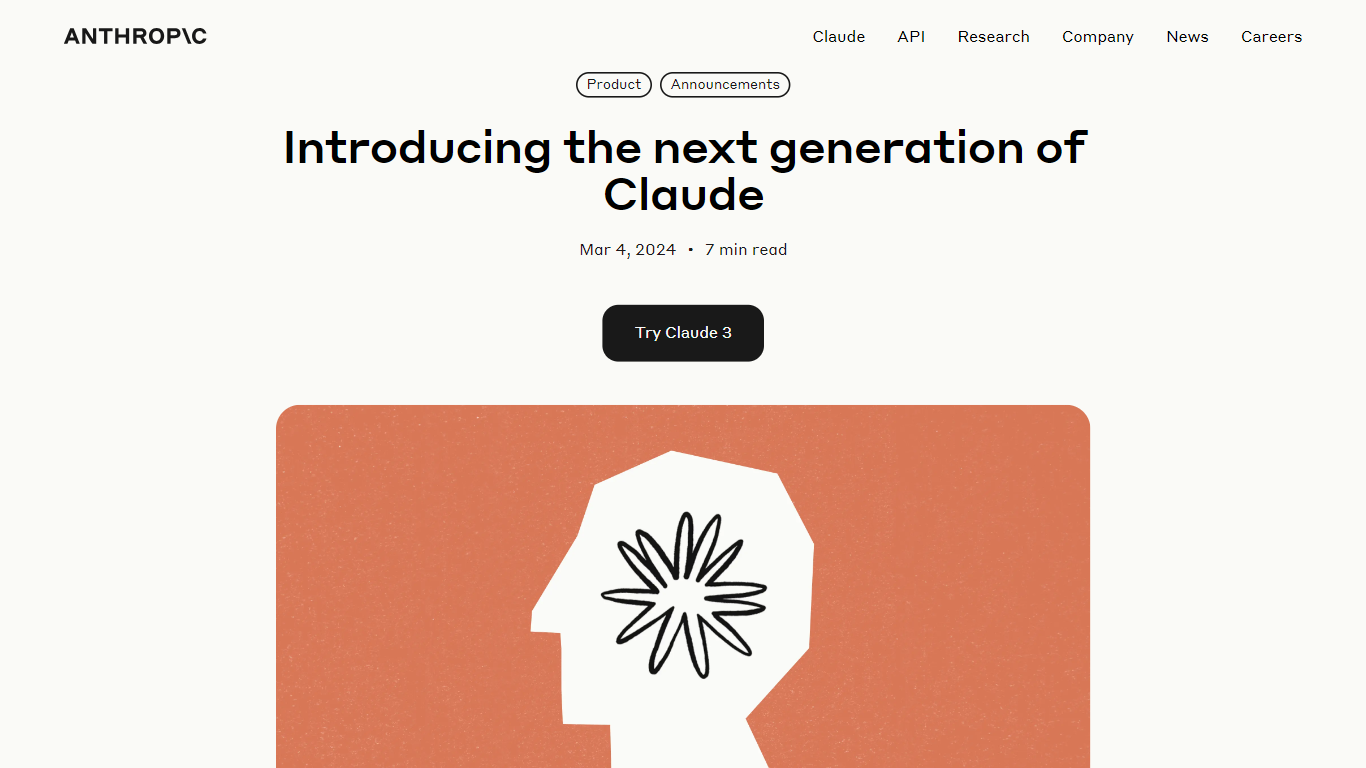Claude 3 \ Anthropic vs Dromedary
In the clash of Claude 3 \ Anthropic vs Dromedary, which AI Large Language Model (LLM) tool emerges victorious? We assess reviews, pricing, alternatives, features, upvotes, and more.
If you had to choose between Claude 3 \ Anthropic and Dromedary, which one would you go for?
Let's take a closer look at Claude 3 \ Anthropic and Dromedary, both of which are AI-driven large language model (llm) tools, and see what sets them apart. The upvote count shows a clear preference for Claude 3 \ Anthropic. Claude 3 \ Anthropic has garnered 7 upvotes, and Dromedary has garnered 6 upvotes.
Think we got it wrong? Cast your vote and show us who's boss!
Claude 3 \ Anthropic

What is Claude 3 \ Anthropic?
Discover the future of artificial intelligence with the launch of the Claude 3 model family by Anthropic. This groundbreaking introduction ushers in a new era in cognitive computing capabilities. The family consists of three models — Claude 3 Haiku, Claude 3 Sonnet, and Claude 3 Opus — each offering varying levels of power to suit a diverse range of applications.
With breakthroughs in real-time processing, vision capabilities, and nuanced understanding, Claude 3 models are engineered to deliver near-human comprehension and sophisticated content creation.
Optimized for speed and accuracy, these models cater to tasks like task automation, sales automation, customer service, and much more. Designed with trust and safety in mind, Claude 3 maintains high standards of privacy and bias mitigation, ready to transform industries worldwide.
Dromedary

What is Dromedary?
Dromedary is an open-source project by IBM aimed at creating a self-aligned language model (LLM) designed with a focus on helpfulness, ethical considerations, and reliability. Hosted on GitHub, the project is committed to advancing the development of LLMs that can be trained with minimal human supervision. Dromedary employs a principle-driven approach to ensure that the resulting language models align with the desired outcomes, thus mitigating risks while enhancing overall performance. The project features comprehensive details and insights, which can be accessed through the project page and a dedicated research paper. The initiative is part of IBM's contribution to the field of AI ethics and responsible AI development.
Claude 3 \ Anthropic Upvotes
Dromedary Upvotes
Claude 3 \ Anthropic Top Features
Next-Generation AI Models: Introducing the state-of-the-art Claude 3 model family, including Haiku, Sonnet, and Opus.
Advanced Performance: Each model in the family is designed with increasing capabilities, offering a balance of intelligence, speed, and cost.
State-Of-The-Art Vision: The Claude 3 models come with the ability to process complex visual information comparable to human sight.
Enhanced Recall and Accuracy: Near-perfect recall on long context tasks and improved accuracy over previous models.
Responsible and Safe Design: Commitment to safety standards, including reduced biases and comprehensive risk mitigation approaches.
Dromedary Top Features
Open-Source Project: An initiative by IBM to create self-aligned LLMs.
Ethical and Reliable: Focus on developing language models with ethical considerations and reliability.
Minimal Human Supervision: Ability to train language models with minimal human input.
Principle-Driven Approach: Utilization of principles to guide the alignment of language model behavior.
Accessible Research: Detailed project information and research paper available for comprehensive insights.
Claude 3 \ Anthropic Category
- Large Language Model (LLM)
Dromedary Category
- Large Language Model (LLM)
Claude 3 \ Anthropic Pricing Type
- Freemium
Dromedary Pricing Type
- Freemium
